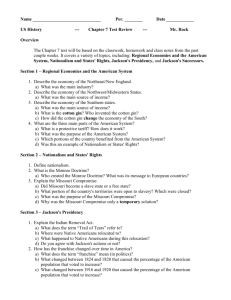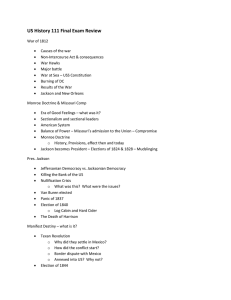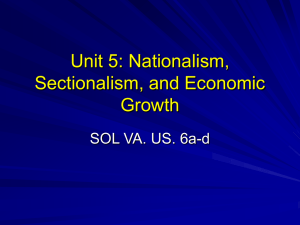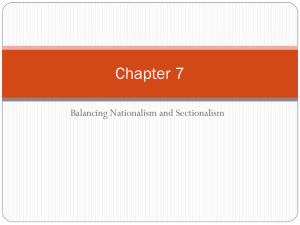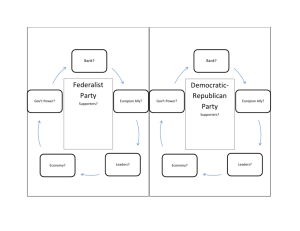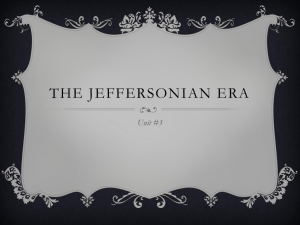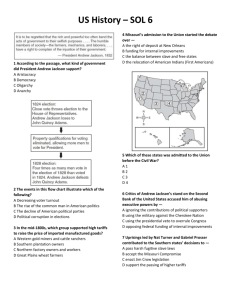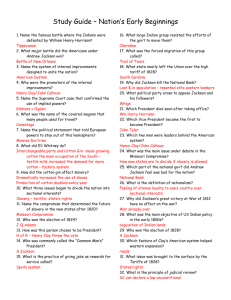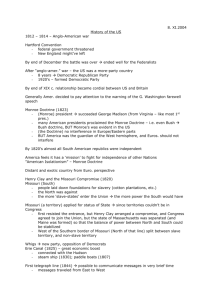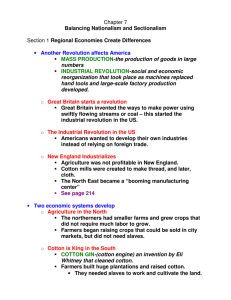From Nationalism to Sectionalism
advertisement
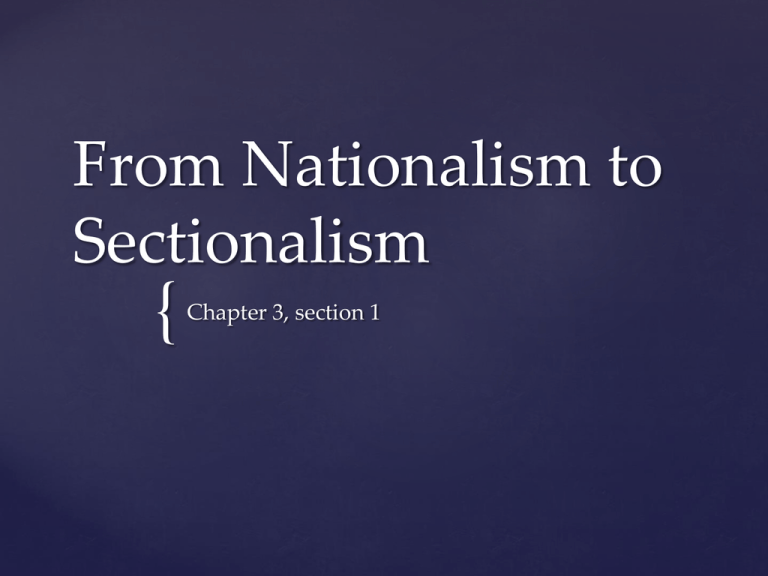
From Nationalism to
Sectionalism
{
Chapter 3, section 1
New sense of nationalism
Economy growing rapidly
“Era of Good Feelings”
McCulloch v. Maryland (1819)
Chief Justice John Marshall
sided with national government
on issue of national bank
Gibbons v. Ogden (1824)
Gave national government sole
right to regulate interstate
commerce (trade between
states)
Nationalism and Domestic Policy
Adams-Onis Treaty
US acquired Florida and
established boundary between
Louisiana Purchase and
Spanish territory
Allowed American settlers to
travel to Oregon for 10 years
Monroe Doctrine
Declared the Americas offlimits to European
colonization
Could view further
colonization “as dangerous to
our peace and safety”
Nationalism and Foreign Policy
Missouri petitioned to
become state
Would upset balance of slave
states and free states (11
each)
Missouri Compromise
allowed MO to come in as a
slave state with Maine which
was a free state
Banned slavery in northern
part of Louisiana Territory
Sectionalism (belief in a
region being more
important than the whole)
began to emerge
Missouri Compromise
Jackson ran in a close election and
lost to John Quincy Adams
Indian Removal Act
Called for relocation of five
Indian nations to Indian
Territory (west of Mississippi
River)
Trail of Tears
National Bank
Age of Jackson
Eventually decided in the
House of Representatives
Jackson created the Democratic
Party and won the next election
because Adams was unpopular
Created to regulate state banks
Jackson opposed because
thought Constitution didn’t give
Congress the authority to create
it
State banks made it easier for
poor people to get loans
Jackson ordered secretary of
treasury to take money out of
national bank and deposit into
state banks that were
conveniently loyal to him
Controversy over powers of federal
government vs. state government
10th Amendment
Northern states and Southern states
clashed over tariffs on foreign goods
Northern states liked the tariffs to
make northern goods more
competitive, but Southerners didn’t
like paying more
“Nullification Crisis” when South
Carolina rejected the new tariffs and
threatened to secede if government
tried to enforce
Jackson tried to use military force to
collect, but Henry Clay worked out
compromise to reduce tariffs for 10
years
States Rights
Mid-1700s to mid-1800s Industrial
Revolution
Steam engines and machines for
textiles created in Britain
Made it illegal to leave the
country or export a machine
Samuel Slater brought machines
to America
Urbanization in the North
Roads, canals, railroads all sprung
up
Telegraph was patented by
Samuel Morse
Sends messages using electricity
through wires
Instant communication
The Industrial North
Eli Whitney’s cotton gin
made large-scale cotton
production possible
Separated the seeds from the
cotton
Textile industry in the
North bought cotton to
weave into cloth
Demand from Great Britain
for cotton
Slavery grew
1810: 1 million slaves
1840: 2.5 million
1/3 of South’s population
Cotton and the South
